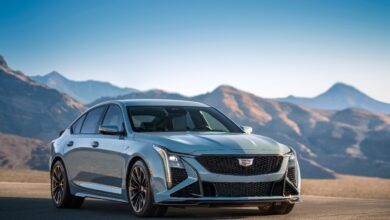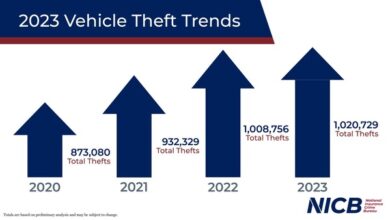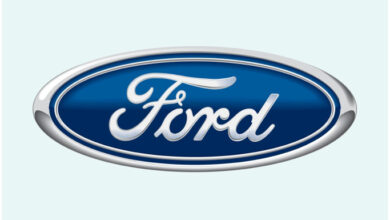For Ford, Vision is 2020

Ford is revamping its lineup, building on truck, SUV and commercial strengths, investing in new propulsion and delivering standard connectivity on new vehicles. The company also hopes to pave the way for over-the-air updates and the Transportation Mobility Cloud, an open platform that will empower tomorrow’s mobility systems.
By 2020, Ford’s average showroom age will have dropped from 5.7 to 3.3 years, as it replaces three-quarters of its lineup and adds four new trucks and SUVs.
“This showroom transformation will thrill customers, drive profitable growth and further build toward our future of smart vehicles in a smart world,” said Jim Hackett, Ford president and CEO.
Ford is going all-in on hybrids, offering customers more performance and capability yet serving as a hedge against higher gas prices. All new Ford vehicles will have 4G LTE connectivity by the end of 2019. Ford is also introducing Ford Co-Pilot360, a new driver-assist technology package with standard automatic emergency braking that helps protect from the front, rear and sides.
Ford is strengthening its position in the following segments: Trucks, SUVs (including off-road and performance versions), hybrids, battery electric vehicles and commercial vehicles.
Trucks
Since the 2014 debut of the new F-150 with a high-strength, military-grade, aluminum-alloy body, Ford has gained 1.3 percentage points of share in the full-size pickup segment. Average F-Series transaction prices are up $6,700 per vehicle since 2014, thanks to high-end versions like Lariat, King Ranch and Platinum.
Ford is aiming for its truck business to continue growing as it adds new models and powertrains with an eye toward continued growth in high-end trims. Some highlights include:
- 2018-New 3-liter Power Stroke diesel engine for F-150, updated version of the F-150 Raptor
- 2019-Ranger returns to midsize truck segment; new F-Series Super Duty debuts<
- 2020-New F-150 debuts with new hybrid powertrain featuring a mobile generator
SUVs
By 2020, Ford estimates SUV sales could account for 50 percent of U.S. industry retail sales- one reason Ford is reallocating $7 billion in capital from cars to SUVs. By 2020, Ford plans a lineup of eight SUVs, five of which will offer hybrid powertrains and one battery electric.
Ford SUV sales are estimated to grow 20 percent to more than 950,000 by 2020, according to LMC Automotive, and surpass 1 million by 2021.
Ford’s next push is in the highest volume SUV segments. Entirely new versions of the Escape and Explorer debut next year; combined, these two models make up 70 percent of Ford’s SUV volume.
Ford also plans to drive growth with two all-new off-road models: The new Bronco and a yet-to-be-named off-road small utility-both designed to win a growing number of people who love getting away and spending time outdoors with their families and friends.
Ford also will grow its lineup of performance SUVs. Two additions to the Ford Performance lineup include the all-new Edge ST later this year, and an Explorer ST will soon follow. These two new SUVs will help Ford Performance deliver on its promise of 12 new models by 2020, and will help extend the division’s growth, which has risen 81 percent in the last four years.
Ford Performance sales are on track to grow another 71 percent by 2020, driven by SUVs, according to the company.
Hybrids
Part of Ford’s new strategy includes going all-in on hybrids. Ford’s new hybrids will offer customers more space than today’s hybrids, according to the company.
On the F-150 Hybrid, Ford will lean in to capability, such as the low-end torque for extra pulling power and the fact that it can serve as a mobile generator. Mustang Hybrid will be all about delivering V-8 style performance with more low-end torque.
Ford’s new hybrid system is designed to be more efficient and less expensive than previous generations, according to the company. These lower costs will be achieved through supply base relationships, using common cell and component design and by manufacturing motors, transmissions and battery packs.
Electric Vehicles
Battery electric vehicles (BEVs) represent more than a different powertrain. They represent a lifestyle change for consumers, especially for those who have never driven an electric vehicle.
That means making charging an effortless experience at home and on the road as well as offering full-vehicle over-the-air software updates to enhance capability and features.
“Throwing a charger in the trunk of a vehicle and sending customers on their way isn’t enough to help promote the viability of electric vehicles,” said Sherif Marakby, vice president of autonomous and electric vehicles for Ford. “In addition to expanding our electric vehicle lineup, we are redesigning the ownership experience to ensure it addresses customer pain points that currently hold back broad adoption today.”
Ford’s BEV manufacturing plan will be more efficient. The company will halve floor space for final assembly operations and reduce capital investment 50 percent. A projected 30-percent improvement in labor efficiency will allow Ford to redeploy employees to do other jobs, including assembly of battery packs (which are normally expensive and complex to ship).
Ford’s new performance battery electric utility arrives in 2020. It is the first of six electric vehicles coming by 2022 as part of the company’s $11 billion global electric vehicle investment.
Commercial vehicles
Ford has a 38-percent share of the U.S. commercial vehicle market, according to the company. To continue building on its commercial vehicle leadership, Ford plans to:
- Debut a new Transit with 4G LTE connectivity, coming in 2019
- Extend production of its E-Series cutaway and stripped chassis into the 2020s
- Offer Automatic Emergency Braking, Lane Departure Warning, Driver Alert System and more on future E-Series, F-650, F-750 and F59 chassis products
Ford earlier this year introduced new versions of its Transit Connect Cargo Van and Transit Connect Wagon, with both arriving at dealerships later this year.




